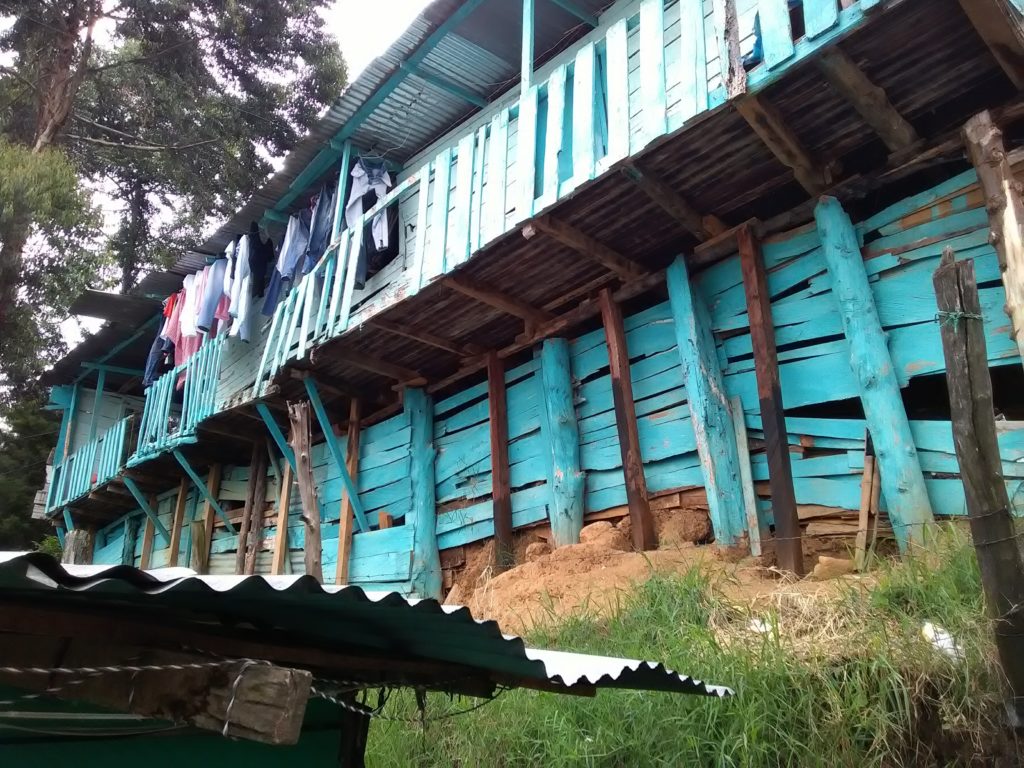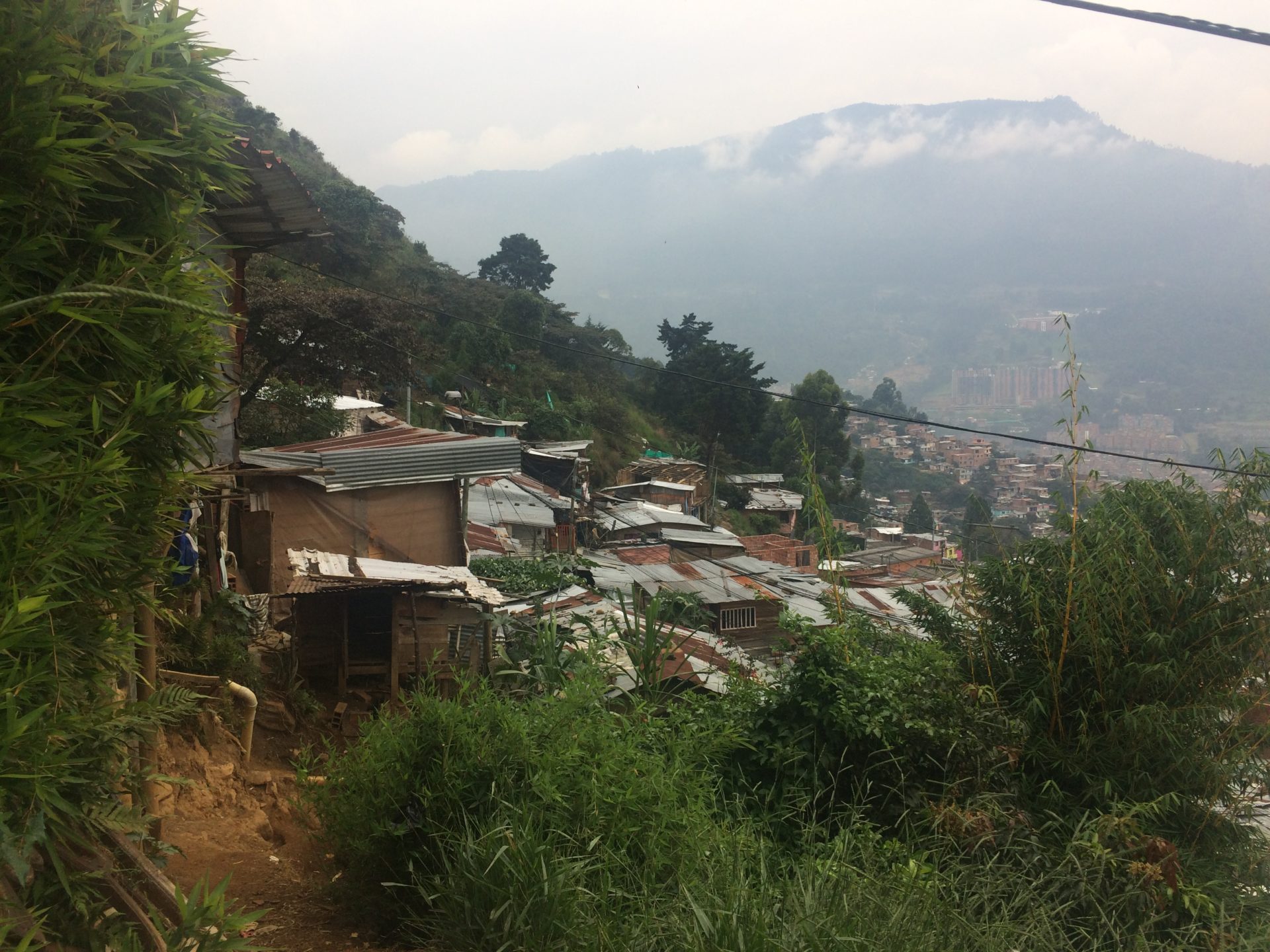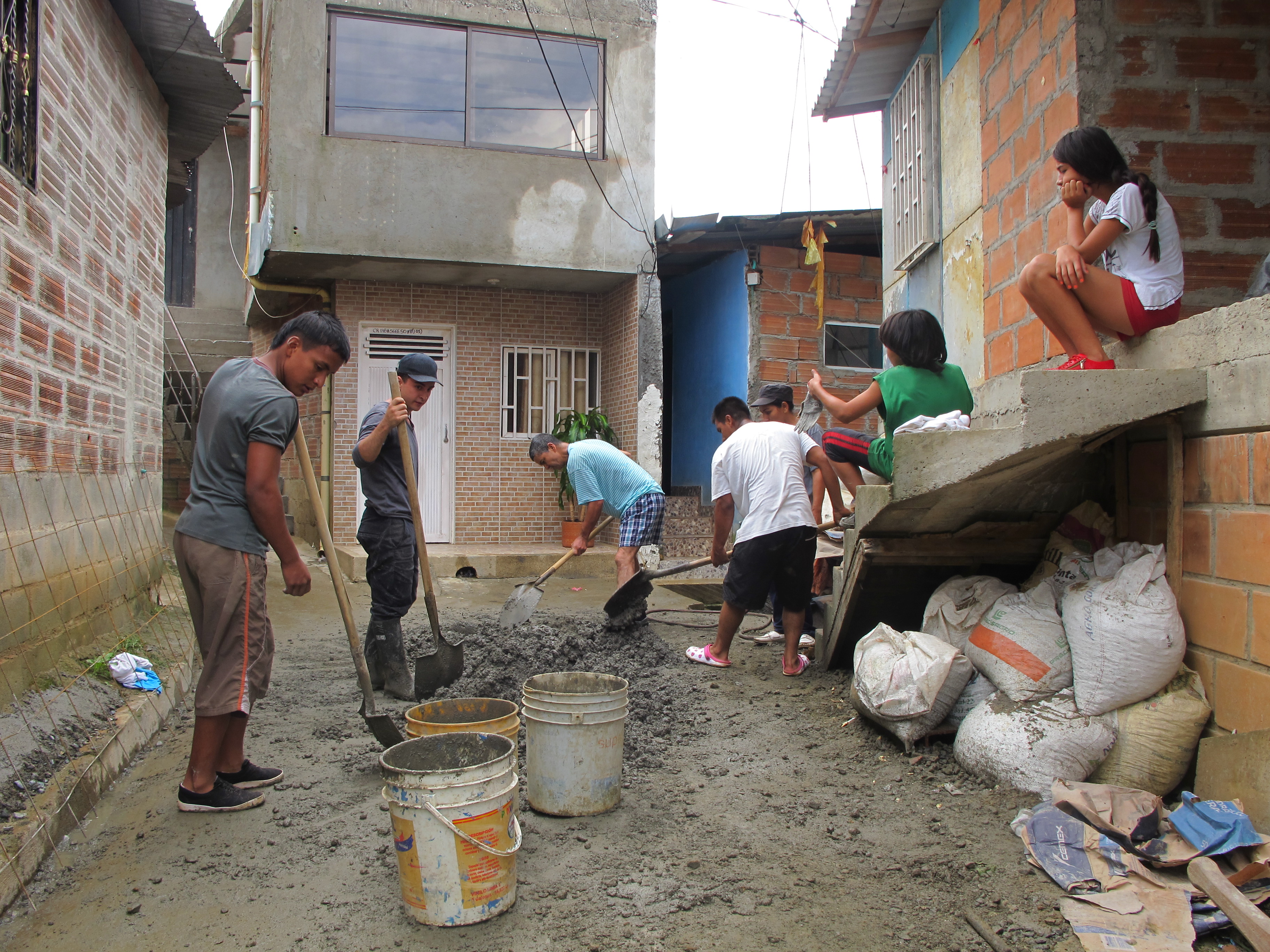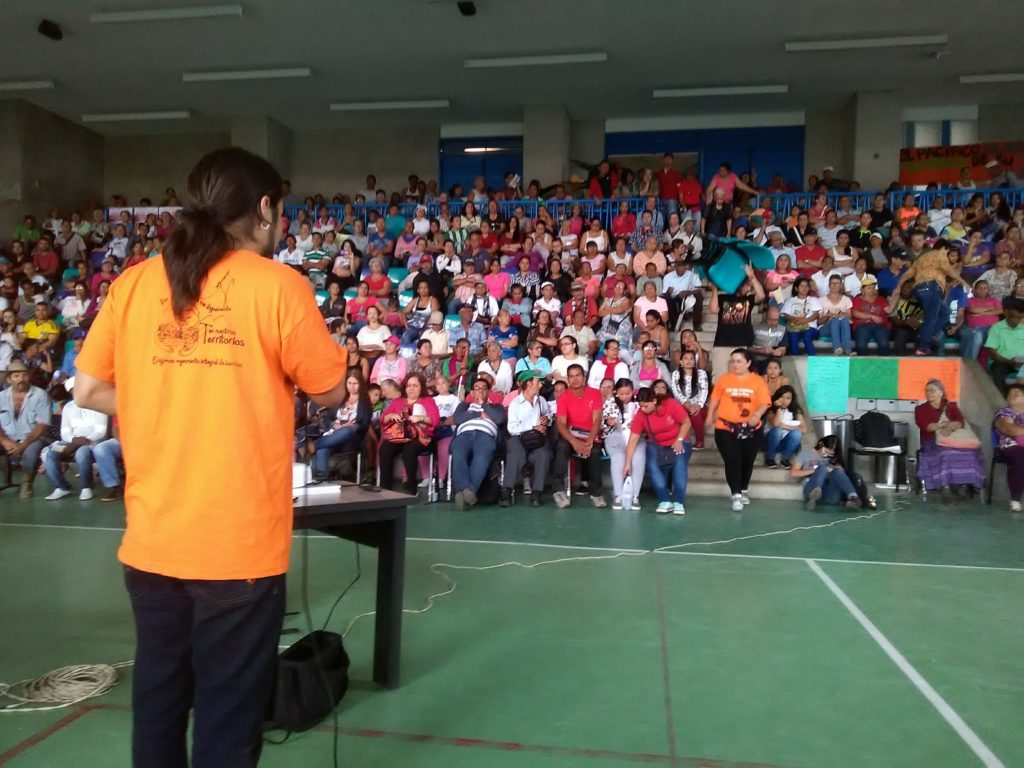Pinares de Oriente is a small community of 180 households built on steep slopes, hundreds of metres above the city of Medellín.1 1. Garcia-Ferrari, S., Smith, H., Coupé, F., Rivera, H., 2018. Medellín City Profile, Cities, 74: 354-364. See all references Most of the population was internally displaced by conflict elsewhere in the country, fleeing from threats to their lives and livelihoods.
The first priorities for new arrivals in Medellín are to get a roof over their (and their children’s) heads, and to feed their family. Many individuals obtain a plot of land on which to build a small shack and eventually a house, and get by with manual jobs such as cleaning rooms in hotels in the city. Despite meagre pay and an expensive and long daily commute to work via local buses that travel down hair-raising slopes, most are happy to have got their family to apparent safety.
However, an underlying danger exists in Pinares de Oriente, where many are unaware of the tragedy that struck the nearby neighbourhood of Villatina, 30 years earlier. On September 27, 1987, approximately 500 people died in a landslide.2 2. Coupé, F., Arboleda, E., García, C., 2007. Villatina: Algunas reflexiones 20 años después de la tragedia. Gestión y Ambiente 10(2):31-52. See all references The predominantly young population of Medellín has no community memory of the event. Most residents are also unaware that the soil on which their houses stand is exactly the same type as that which engulfed Villatina with such devastating consequences. After large storms, areas with this type of soil tend to have small landslides, in particular across the north-east sector of the city. 3 3. Aristizábal, E., Goméz, J., 2007. Inventario de emergencias y desastres en el Valle de Aburrá originados por fenómenos naturales y antrópicos en el periodo de 1880-2007. Revista Gestión y Ambiente 10(2):17-30. See all references
Landslides are a threat throughout many Latin American cities. The poor are the hardest hit, as they tend to live in informal settlements that are perched on steep hillsides on unstable ground. Wealthier people tend to live on safer ground, either closer to the city centre or in high-income suburbs that are less exposed. This pattern is observed in cities around the world: perhaps other threats loom, such as water shortages in Lagos and the potential for flooding in sinking informal neighbourhoods in Jakarta.4 4. Maskrey, A., 2011. Revisiting community-based disaster risk management. Environmental Hazards 10(1):42-45. DOI: 10.3763/ehaz.2011.0005 See all references
But partnerships of academics and residents can help local people living with these risks. In Medellín, one such project is “Resilience or resistance?”, with the ambitious goal of identifying politically and practically viable approaches to landslide risk-reducing strategies in the city and its informal settlements. Negotiation and cooperation between communities and local government are key to its success. The safety of people who are building their lives and their homes on the hillsides around Medellín depends on such spaces for dialogue and negotiation.5 5. Smith, H., 2003. Spaces of negotiation in low-income housing in San José, Costa Rica: A comparison of spaces of negotiation in Rincón Grande de Pavas. International Development Planning Review 25(2):169-193. See all references

Residents have realised how much harm the heavy rains could cause, and how exposed their homes are. A typical house in the community of Pinares de Oriente that underwent monitoring and mitigation works as part of the project. Photo: Heriot-Watt University.
How communities can manage landslide risk
The threat of landslides affects an estimated 44,600 households in informal settlements in Medellín. As some community leaders in the area became increasingly aware of the threat, they pleaded with local authorities to officially recognise their illegal and irregular settlements and to turn them into dignified and well-serviced neighbourhoods.6 6. URBAM & Harvard Design School, 2012. Re Habitar La Ladera: Shifting Ground, Universidad EAFIT, Medellín. See all references The pleas then broadened, with a demand to make the communities safe through investments in mitigating the risk of landslides.
An increasingly literate and well-connected community leadership developed the notion of a “dialogue of knowledges”, bringing together knowledge from academic researchers and local residents. The idea was to foster a collaboration with academia in the quest to lobby local government to improve living conditions.
The participatory-action research project that resulted, officially called “Resilience or resistance? Negotiated mitigation of landslide risks in informal settlements in Medellin”, was funded by the UK’s Global Challenges Research Fund and administered by the Natural Environment Research Council. The project was put together with the help of a highly connected community leader, and it partnered the community with a multidisciplinary team of academics from the Universidad Nacional de Colombia Sede Medellín, Heriot-Watt University, and the University of Edinburgh.
“Resilience or resistance?” was set up to show how landslide risk-reducing strategies could be implemented in informal settlements, from the community and state perspectives. The project’s aim was to understand the barriers to such strategies, and to identify politically and practically viable approaches to them, within a wider and more complex context of social and physical risk.
Despite having precious little available time after long working hours, commute, and childcare, many women volunteered to take part in the project. They got a sense from community leaders that by doing so, they might receive home improvements that would help stop heavy tropical rain leaking into their homes. Reducing dampness and improving health conditions in their homes would make life more comfortable – and also save valuable time spent dealing with the leaks.
The community of Pinares de Oriente has increased its awareness of both risk and its own capacity to act.
The project started with a couple of meetings between residents, community leaders, and the academics in the community hall. In the community meetings, the residents initially denied they were exposed to any major landslide hazard, for fear of eviction. They instead wanted to focus on the need for proper services in the neighbourhood, such as clean water, and on how to get legal titles to the land on which they lived. After some time, however, particularly after the academic team conducted interviews with individual residents, the people began to trust that the researchers weren’t going to bring local authorities in to evict them because of the landslide risks. The older and more established residents were the first to open up and start admitting and discussing the risks.
Some participants were surprised at how big the risks were. Many volunteered to join in a landslide hazard monitoring pilot scheme as part of the research project, which started off with a mapping exercise where residents worked with geologists from the academic team. The goal was to identify places where water was not properly controlled in the neighbourhood, and where land was already crumbling or slipping. They then looked for critical points to monitor in these places.
Participants with a critical point near to their home became “community-based researchers”, using their smartphones to take photos regularly and send them to a messaging group that the academics set up. Some of the more enthusiastic neighbours even filmed and sent short videos. While taking the pictures, residents began to realise how much harm the heavy rains could cause, and just how exposed their homes were.
The academic team, with the residents’ input, identified key areas in the neighbourhood where low-cost fixes could mitigate the risk of landslides. The same has been done elsewhere in Latin America and the Caribbean.7 7. Anderson, M. G., Holcombe, E., 2013. Community-Based Landslide Risk Reduction: Managing Disasters in Small Steps. Washington, D.C.: World Bank. Link to abstract and PDF download See all references From the exercise, the team quickly understood that what initially appeared to be only a problem of soils also depended on how water flowed through the neighbourhood. During conversations between residents and technical experts, the residents began to realise that the main issue was controlling the flow of rainwater.

 14 MIN READ / 1989 WORDS
14 MIN READ / 1989 WORDS

